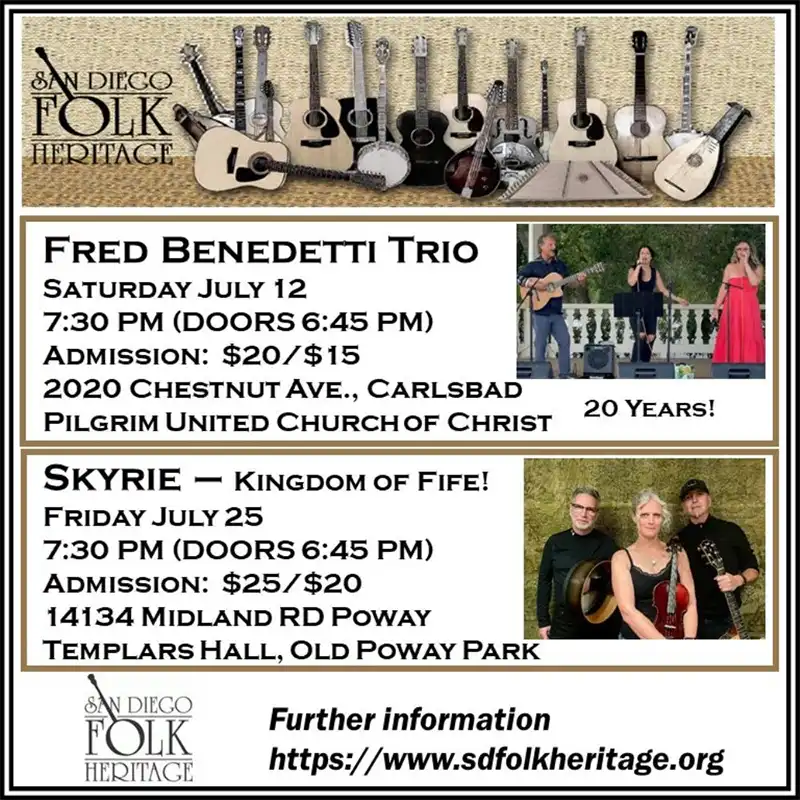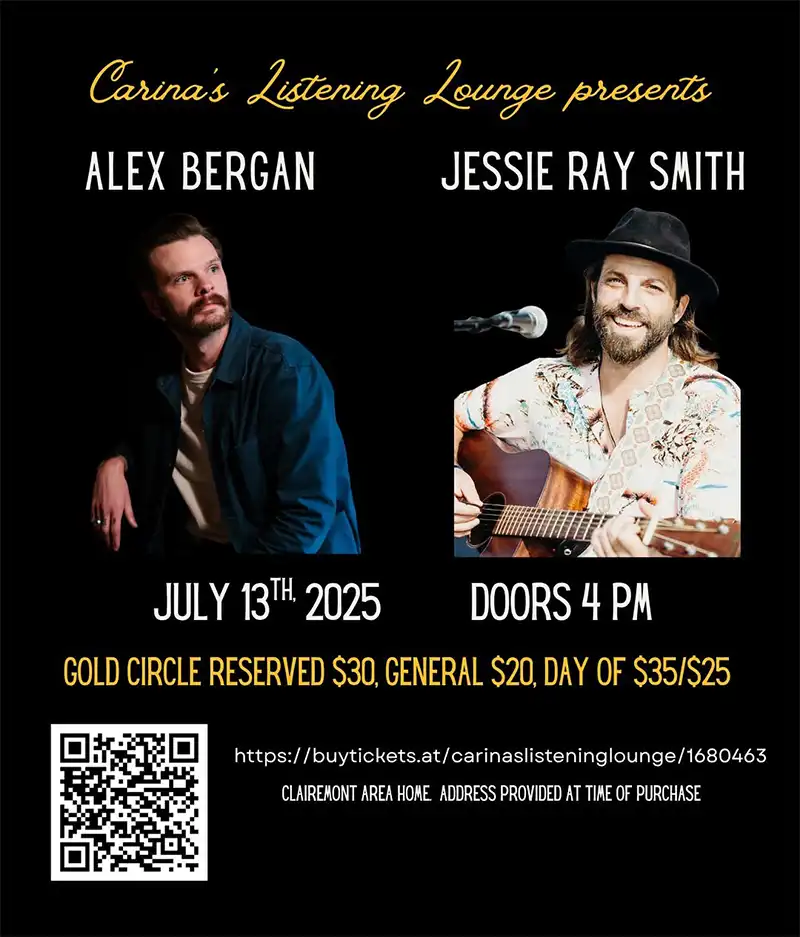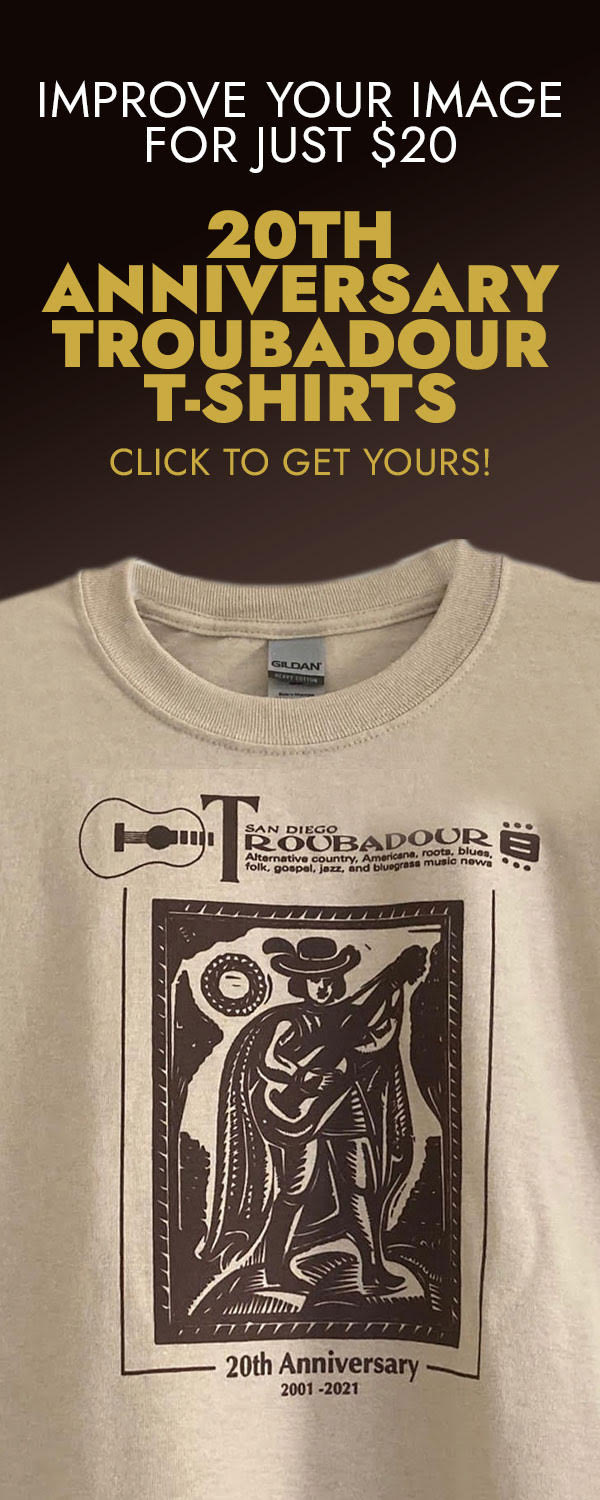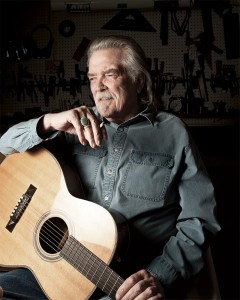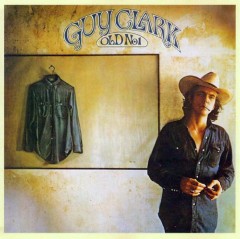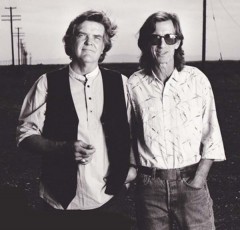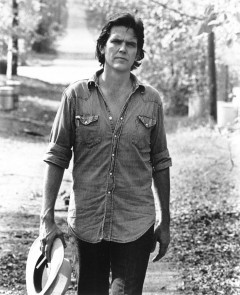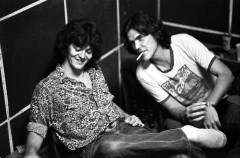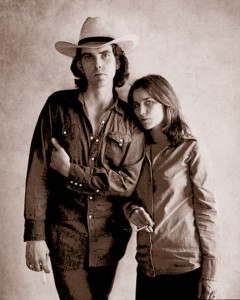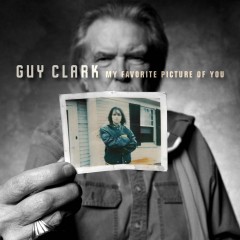Yesterday And Today
GUY CLARK: My Favorite Memories of Him
While the passing of Guy Clark in Nashville last month was not a shock or surprise, it nonetheless had a great impact on so many fans, friends, and musical compatriots in the world of Americana music. It is not that an era has passed with his death. For Americana artists, alt-country musicians, and singer-songwriters in general, it’s the loss of an artist who has ushered in an era of music where we now live. He was not a songwriter who tried to be ambitious or outdo others who came before him. He was content to walk in the footsteps of Hank Williams, as a songwriter, only to take things deeper, more personal, and to emerge with songs that shine like newly discovered gems mined from the rough hills of a life that has been lived and loved-hard, wild, and well. As a songwriter, there was not an unoriginal bone in his body of work. They were written and crafted from his personal experience but always rang with universality–stories that everyone can relate to.
His best known song, “L.A. Freeway,” came to symbolize how he always chose to swim against the tide of fashionable music. His songs for his wife, Susanna Clark, permeated his work with words of passion, joy, anger, humor, and forgiveness. This can be heard in his 2013 song “My Favorite Picture of You.” He wrote a series of songs about friends and family who have passed. Two of his best are “Desperado Waiting for a Train” and “Randall Knife.”
All three of these songs came from his own stories. “L.A. Freeway” was written after leaving Los Angeles. It describes escaping the indifference he found in the West Coast music industry during the early ’70s. As he said on his live Songs and Stories album, “My wife and I used to live out in Los Angeles-Damn-California.” He went on to describe his landlord who spent his days making bullets in his garage. To Clark’s dismay, the man chopped down a grapefruit tree because its roots were cracking his concrete patio, and that led to the opening words of the song:
   Pack up all your dishes
   Make note of all good wishes
   Say goodbye to the landlord for me
   That son of a bitch has always bored me
   Adios to all this concrete
   Gonna get me some dirt-road back street.
The story of how his landlord provided the inspiration to flee L.A. captures the indifference that is still represented when pop music norms in modern country music focus on destroying the roots of natural music in favor of gimmicks and electronic-digital overlays that drown out the human voice.
If we can just get off of this L.A. Freeway
   Without getting killed or caught
   Down that road in a cloud of smoke
   To some land I ain’t bought.
In a very real way, the song foreshadowed what Guy Clark’s career would become over the years–always drawn to the Real, the unsentimentally sentimental, and constantly ready to swim upstream, no matter the cost.
In 1972, Jerry Jeff Walker, the New York City-Texas transplant singer songwriter, recorded the song. It became an underground country hit and a key song in the growing Outlaw Country Movement based in Austin. The song helped to get the support to have Guy Clark’s first five albums recorded. Today, these albums, made on major labels between 1975 and 1983, including the debut, Old No. 1 and South Coast of Texas, are considered classics. Each album went beyond the limitations of the limited country song of the day and would eventually lead the way toward the broader, Americana Music Movement. Rather than singing about the usual topics of cheating and drinking, Clark sang from the inner fire of his own life. His subjects included old heroes, a love story between an old drunk and a prostitute, a bar room dance girl, Texas food, his father’s death, and his beloved home-grown tomatoes. He wrote with the originality of a Texas author similar to Larry McMurtry and Cormac McCarthy.
One of Clark’s most important relationships was his lifelong friendship with Texas singer-songwriter Townes Van Zandt. The two songwriters shared a unique brotherhood bond that was formed through songwriting and their wild escapades. It was a bond that would also include Clark’s wife, Susanna, who loved both men deeply. The trio were artists who were crazy about each other as they sometimes drove each other crazy. In looking at Clark’s career, there is no way to imagine his songs without Susanna and Townes somewhere nearby, providing him with the muse he needed in those creative moments, which resulted in so many classic songs.
In following Clark’s career as a songwriter and recording artist, his influence continued beyond those first albums. As the key country music year of 1988 unfolded in the midst of what Steve Earle has dubbed “The Great Credibility Scare of the ’80s,” Clark began a series of innovative and influential albums. It was a time when, for reasons unknown–most veteran Americana artists only speculate today–you could hear, from mainstream country radio, artists like Chris Hillman and the Desert Rose Band, kd lang, Lyle Lovett, Rosanne Cash, Emmylou Harris, and Dwight Yoakam. It didn’t last long. In 1989, Garth Brooks would break out with runaway success never before experienced in country music. Mainstream country began to lean toward sounds that often resembled the dull arena rock of the ’70s. The shows became bigger and flashier with millions dollars in effects.
While mainstream country of the late ’80s and early ’90s was busy watering things down with overblown stage antics and superficially produced mediocre corporate-rock disguised behind a southern accent, Guy Clark led the way toward stripping the song down to basics in the studio. During the years Garth Brooks carefully staged nightly shows destroying two guitars before thousands of fans, Guy Clark was building and repairing guitars. He was also known as a skilled luthier. The contrast couldn’t be clearer.
Clark’s music also took the opposite direction of mainstream country’s fondness for over-production and glossiness. The music he created in the studio between 1988 to 1995 is bare, stark, and beautiful. They became the blueprint for future Americana artists. The approach was live-in-the-studio, no overdubs, vocals up-close and intimate, and all acoustic stringed instruments. The albums Old Friends, Boats to Build, and Dublin Blues feel as though Clark is in a dark room playing for the listener.
It was during these years the Americana-roots music movement was born. The title of the genre was coined in 1995, the year Dublin Blues was released. In 1994, six years after the release of Old Friends, Johnny Cash and Rick Rubin used the same stripped-down, intimate approach to revitalize Cash’s sagging career. This way of making records for Americana artists was based on how Clark made his records, dating back to his first release, Old No. 1. They were country songs recorded with a one-mic bluegrass mentality.
Over the years, Clark never stopped writing and recording songs that reflected his life. Probably most important was the influence of his wife, artist and songwriter Susanna Clark, who died of cancer in 2012. She inspired his earliest and most heart-felt love songs, which were many. “Like a Coat from the Cold” and “I Don’t Love You Much Do I?” are prime examples of this. But, Clark never idealized her in his songs. Rather, they were touching, real, and honest. One of the best songs written about marital discord is “Dublin Blues.” We don’t know the entire story, only what the words show us. We do know the singer is telling his story from Dublin and wishing he was in Austin after he and his lover have parted company. As the chorus says,
Forgive me all my failures
   Forgive me all my faults
   There’s no need to forgive me
   For thinkin’ what I thought
   I loved you from the get-go
   And I’ll love you till I die
   I loved you on the Spanish Steps
   The day you said goodbye.
But, for all of the range of emotions that came from his songs for his wife, no song rang as real and authentic as the title track from his Grammy winning 2013 final album, “My Favorite Picture of You.” The song displays the interplay between complicated relationships–the love and the anger. Clark is holding the photograph on the cover of the album. The photo captures Susanna in a moment of anger. After her passing, he sees through the conflict into the love he feels for her.
My favorite picture of you
Is the one where
Your wings are showing
Oh, and your arms are crossed
Your fists are clenched
Not gone but going
Just a stand up angel
Who won’t back down
Nobody’s fool, nobody’s clown
You were smarter than that
Another classic signature song, “Desperadoes Waiting for a Train,” was written for Clark’s grandmother’s boyfriend. From the narrative in the song, the man was a hero to him. In his own unique and epic way of telling his story, Clark weaves into the chorus the image in the song title. He was the old man’s sidekick, “like in some old western movie.” The words quickly conjure up John Ford and Sam Peckinpah movie myths of western imagery and drives the relationship deeper–as they wait for the train of mortality to come for them. The final verse says it all:
   The day before he died, I went to see him
   I was grown; he was almost gone
   We closed our eyes and dreamed ourselves
a kitchen
   And sang another verse to that old song
   Like desperadoes waiting for a train.
The final classic song, which many of his peers have called one of the best ever written by a singer-songwriter, is “Randall Knife.” The story is about his attorney father, a World War II veteran. As a child, Clark saw the bond his father had with the large knife, which he took with him to the war. When, as a child, Clark damages the knife, his father simply hides it his bottom drawer and never mentions the knife again. After his father died, the song recounts how Clark could not find the tears for him.
I’d cried for every lesser thing
   For whiskey, pain, and beauty.  Â
Then, he finally finds way to grieve
   through the Randall knife.
   When we got back to the house
   They asked me what I wanted.
   Not the law books, not the watch
   I need the thing he’s haunted
   My hands burned for the Randall knife.
   And there in the bottom drawer
   I found a tear for my father’s life
   And all that it stood for.
These songs are but a few that give a hint of the depth and beauty of one of America’s greatest songwriters. In the end, these stories he’s told have paralleled my own life in the most personal of ways. The heartbroken characters that have drifted in and out of my life are reflected in his songs. The loss of a father, a lover, or a friend bends like willows in the wind of the words he has crafted from his own life. The joy and romantic love, the value of an old friend to help you through hard times, the old man who shows up in your childhood to impart his own earthly wisdom then fades away into the ages; I’ve experienced all of these things and I hear them in the songs of Guy Clark. His passing won’t stop the muse of words. I know they have been imparted to me. I have shared them with others.
These days, I spend time with a 90-year-old veteran of World War II. To pass the time and engage when we are together–I play guitar and we sing. Over the last year, I’ve taught him “Desperados Waiting for a Train.” He listens to every word. I see Guy Clark’s story wash over him. When it comes to the chorus, he joins me in an imperfect raspy pitch. “Desperados waiting for a train,” he sings, and I lower my voice so I can hear his. It is the way the song was meant to be heard. And once again, Guy Clark is there in the kitchen with us as this old man sings his words. In my deepest heart, I know it is not a cliché to say that this songwriter lives in his songs. He not only lives, he soars deep into the dark night we all walk toward, where we all hear the final song. It is good to know that Guy Clark will be waiting for us on the other side of the moors of our own mortality.


